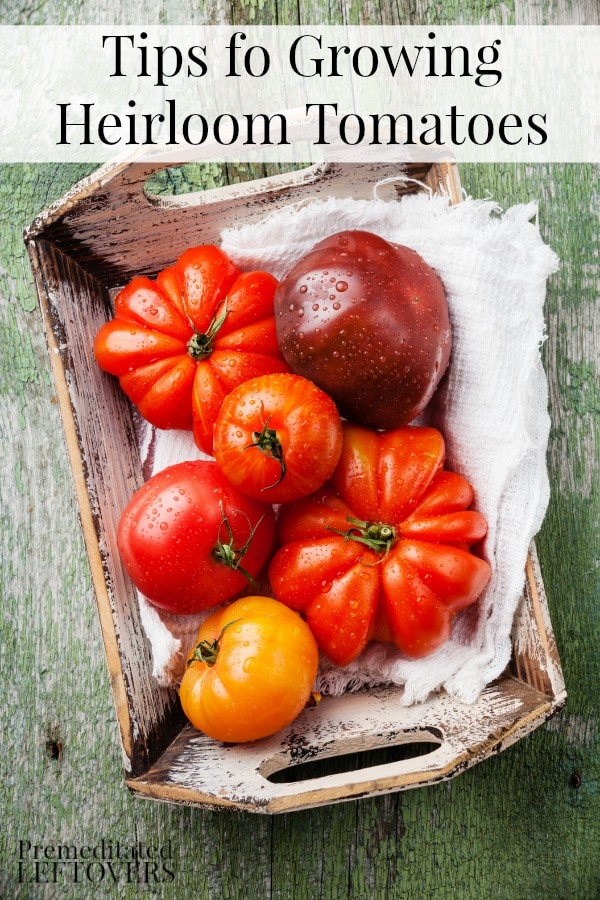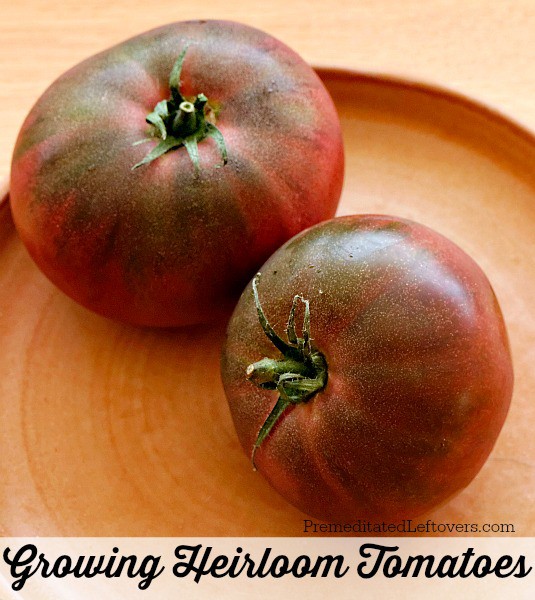Have you ever walked into the grocery store and eyed a lightly colored tomato that looked light orange, pink, yellow or tricolored? Those are heirloom tomatoes and they are sold in the produce section for $5.99 a pound and up! It is crazy to think how many people actually buy them, especially when you consider the price of a normal hot house or Roma tomato. While heirloom tomatoes were around before the 1940’s, the types you often find in grocery stores are the commercially created type that was mass produced to sell in large quantities to grocery store customers.
The term “heirloom” meant something different before the 1900’s, back then when someone talked about heirloom plants it meant seeds that were passed down from generation to generation. Today, heirloom means plants that we used to grow way back in the day. Today’s heirloom gardens come in all shapes and sizes. Some gardeners grow heirloom vegetables out of pure fascination, some compete and others are in it for the historical value and most are definitely interested in the taste. Whatever reason you choose to grow heirloom, once you start you might find it difficult to stop. One could say you might become obsessed with heirloom gardening.
What Does Heirloom Mean?
There are 4 different types of heirloom classifications. Commercially grown are the open pollinated verities that were grown before the 1940’s. These have been around for more than 50 years, grown commercially and seen most in the grocery stores. The family heirlooms are the ones where family passed there seeds on, they were grown, and seeds were harvested and passed on to the next generation. Family heirlooms are the type of seeds you would find today, within your own family, through friends and gardeners you meet at swap meets, farmers markets or community garden plots. You can also buy family heirloom seeds online. They wouldn’t be sold commercially or in the store and you wouldn’t likely find them at a nursery or greenhouse. Created heirlooms are cross pollinated by crossing two parent genes, so an heirloom and a regular tomato for example. They are human generated, meaning the new verities were not an act of nature. The last type of heirloom is the mystery one; these are the types that are a product of nature doing its thing. A mystery heirloom has been cross pollinated by pollen naturally mixing with another type of tomato and creating its own “mystery tomato”. Note that any of these types of heirlooms can be commercially grown but it does not mean that they are true, authentic heirloom tomatoes.
Growing Heirloom Tomatoes
You grow an heirloom tomato plant the same way you would grow any other tomato plant. The biggest difference is with heirlooms you need to pay special attention to pest and disease management. Heirloom plants are more susceptible to disease and aren’t able to fight off pests naturally the way a non-heirloom plant can. This is because with commercially propagated plants they are given certain disease and pest control genes so they can grow easier for the gardener thus making it more likely you will buy again. You definitely want to use a non-invasive insecticide when growing heirloom vegetables. Look for an organic one that is all natural and includes garlic, chili oil, pepper flakes, oil, vinegar or another natural insect repelling substance that is all-natural, preferably certified organic.
By planting a short season variety alongside a full season crop you will have your first crop relatively quick and while you start to harvest them you can have a second and 3rd crop. Some short season seed collections include orange Roma, Peche Juane and sunsets. Longer season plants include gourmet varieties like the popular black zebra, brandywine and Julia child. Russian varieties such as the Black Krim is a little hardier and does better in cooler climates than some other varieties. A good patio variety if you don’t have much space is the Burbank slicing tomato, very tasty and big!
How to Grow Heirloom Tomatoes
Start seeds inside 6 – 8 weeks before the last frost.
After all danger of frost has passed, plant your tomatoes in an area where they will receive full sun.
Depending on the variety, plant your tomato plants 2 – 3 feet apart. If you are planning on using stake or cages, place them in the ground before you place your tomato plant in the ground.
Dig the hole bigger than twice the size of the root ball and several inches deeper than necessary. Avoid disturbing the roots any more than necessary.
In the bottom of the hole, add a couple of inches of aged compost. You can also sprinkle some bonemeal in the hole and add one teaspoon of Epsom salts.
Place the tomato plant in the hole so that the lowest branch is level with the ground.
Place mulch around the tomatoes to help hold in moisture.
If you live in an area that doesn’t receive much rain, set up a soaker hose or drip irrigation to maintain soil moisture.
Harvesting Heirloom Tomatoes
Harvesting heirloom tomatoes is a little trickier than their counterparts. You need to immediately store them, can or freeze because they won’t last long without proper storage. Canning is likely your best option since tomato plants produce so much in such a short amount of time. A great use for heirloom tomatoes is to can your own spaghetti sauce.
More Gardening Tips:
- How to Get Started with Composting
- 3 Ways to Start Composting
- How to Start Square Foot Gardening
- Top 10 Organic Fertilizers
- How to Make a Straw Bale Garden
- How to Start a Plot Garden
- Companion Plant Gardening
- Vegetable Container Gardening
- Tips for Attracting Bees to your Garden



Rhonda says
My heirloom tomato plant is going quite well but.. it has just started happening that the blooms are staring to fall off and the leaves have dark vains in them??? Too much water?? Not enough sun???
Tatyana says
I love heirloom tomatoes but cringe to pay high price for them. Our short growing season makes it hard to grow tomatoes (none ripened last year), so I’ll have to check out these short season varieties that you mentioned.